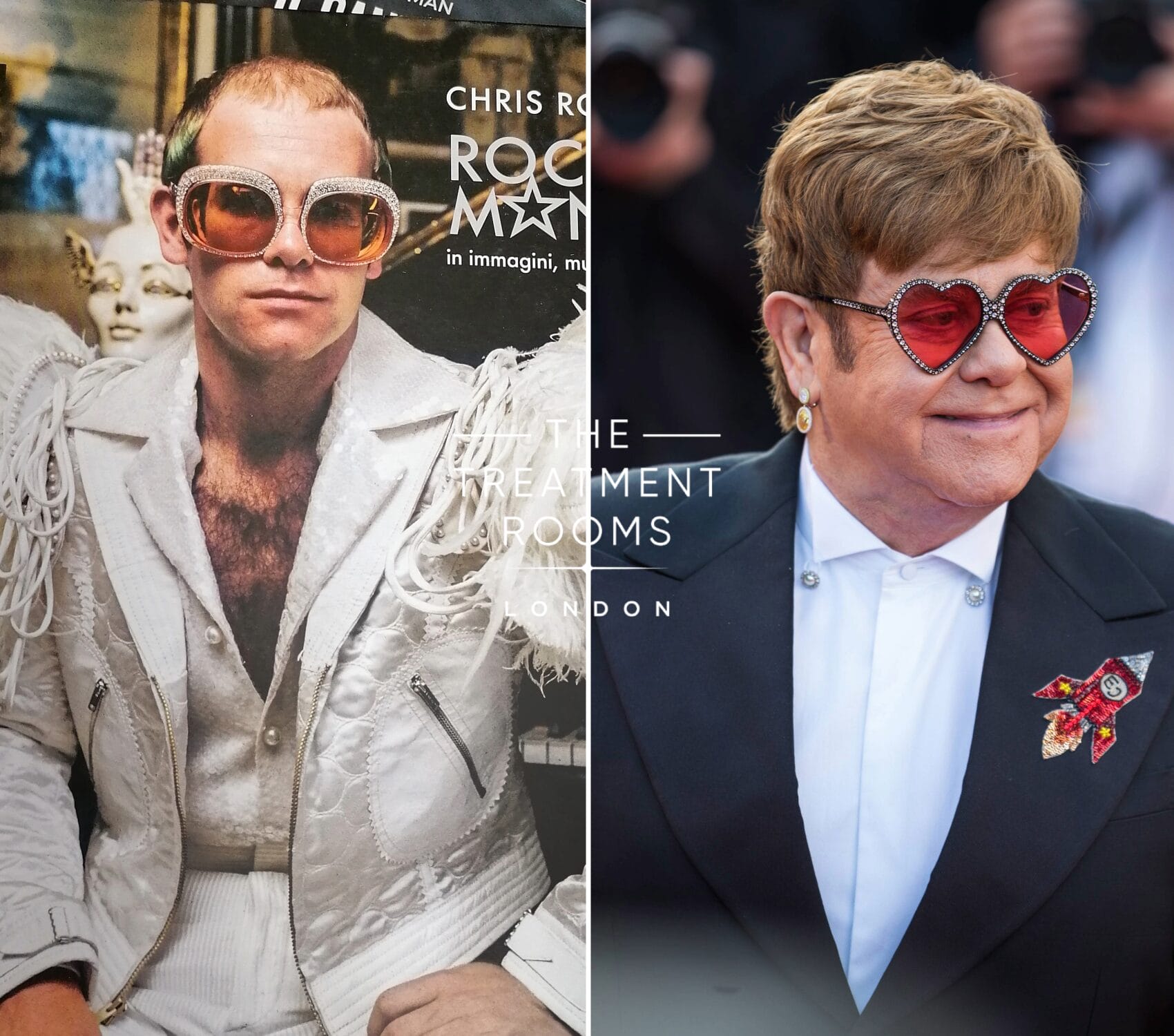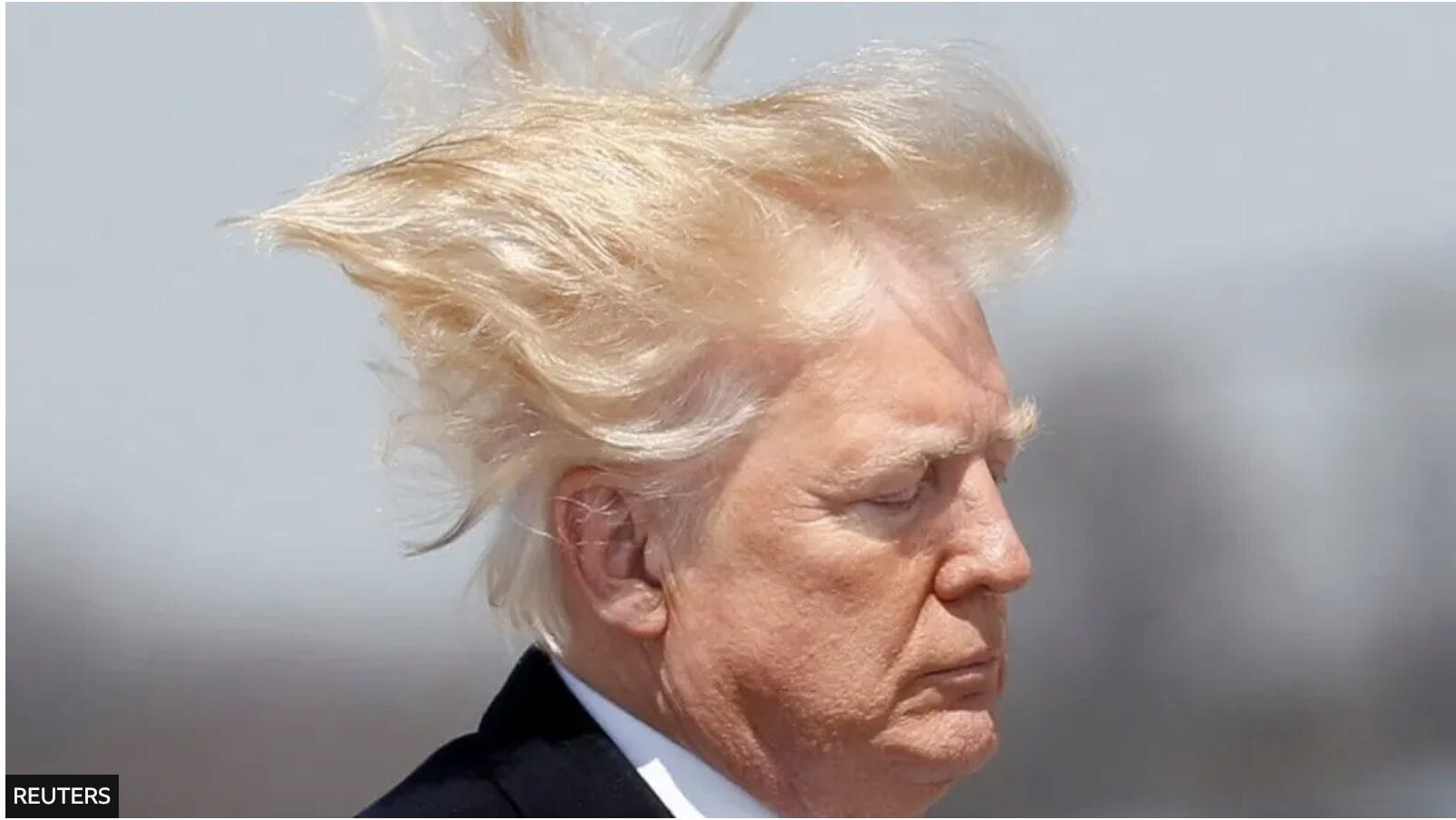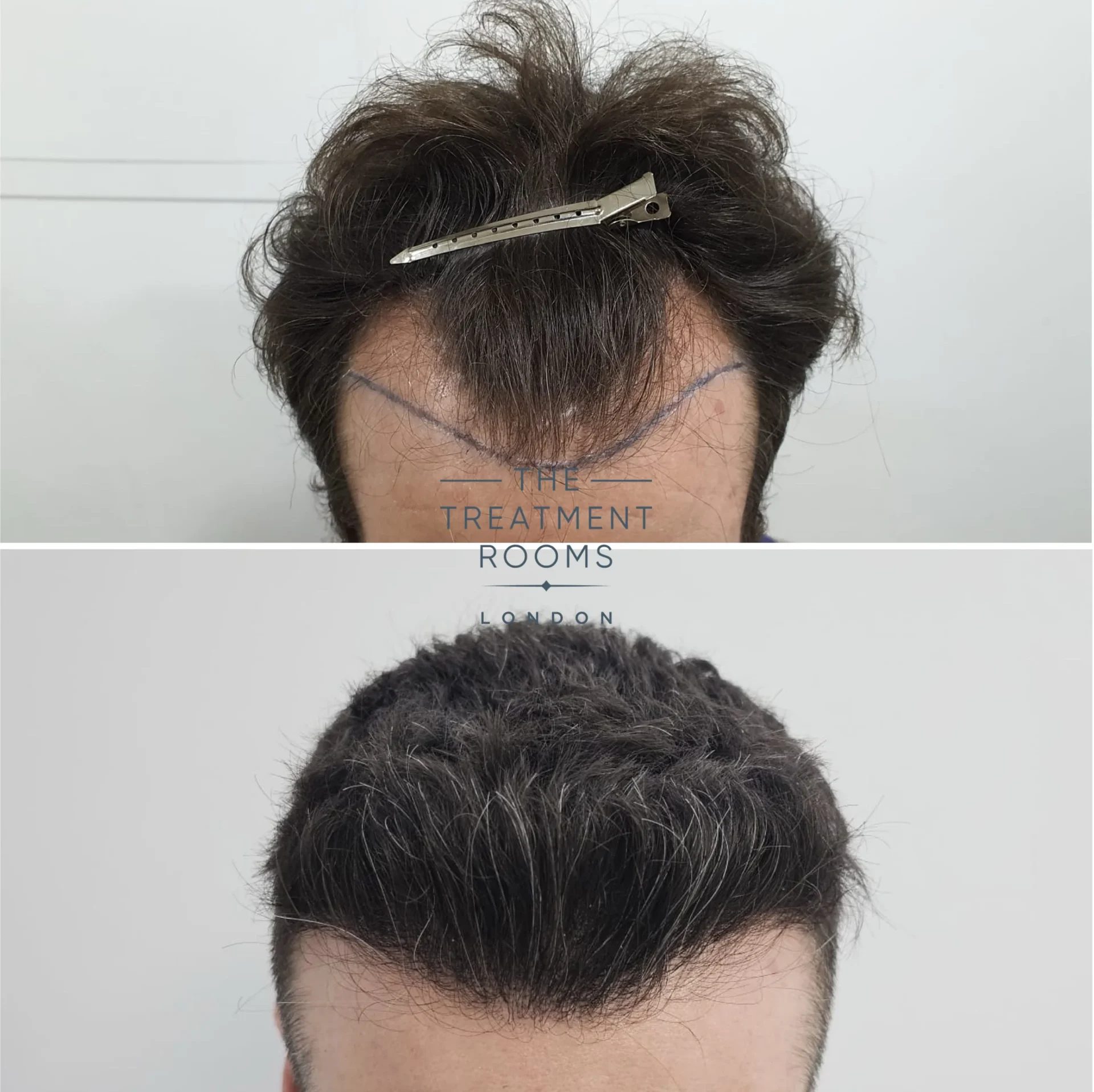Trichotillomania is a mental health condition suffered by patients where they have an irresistible urge to pull out hair from the scalp, eyebrows, eyelashes or other parts of the body. Patients can also suffer from excessive nail biting and skin picking. Trichotillomania is commonly called a hair pulling disorder. The condition can cause long-lasting permanent hair loss, so managing it and understanding how to treat any hair loss is essential.
In this guide, we aim to shed light on the causes and effects of trichotillomania and provide actionable tips for managing this condition.
What is trichotillomania?
Trichotillomania, also known as trich, is a mental health condition that causes people to have an overwhelming desire to pull out their hair. This hair pulling disorder often results in hair loss and bald patches in areas such as:
Symptoms of Trichotillomania hair pulling disorder
Trichotillomania is a mental disorder characterised by an uncontrollable urge to pull out hair, which can be so strong that it may feel like a relief to do so, but it can also lead to feelings of shame and guilt.
Urge to pull
The urge to pull can be triggered by anxiety or stress. It can also be a form of self-harm or a coping mechanism for dealing with difficult emotions. It may be part of other mental health conditions that a patient suffers from.
Some patients who pull their hair may be eating hair too. This can cause particular problems when it comes to digesting the hair that was pulled and rarely some patients will need to have surgery to remove accumulated hair from the stomach.
However, with proper diagnosis and treatment, trichotillomania can be effectively managed so patients don't pull out their hair so often.
Risk Factors For Developing Trichotillomania
The condition can affect people of any age or gender, but it is most commonly diagnosed in children and teenagers between the ages of 10 and 13 years old, with females suffering from trichotillomania more than males. It can be challenging to diagnose trichotillomania as many people with the condition feel embarrassed and may hide their hair loss.
What causes trichotillomania?
We don’t know exactly what causes trichotillomania, but it is thought to be a combination of genetic, environmental and psychological factors.
- People with trichotillomania may have a family history of the condition or other mental disorders such as OCD or anxiety.
- Stress and anxiety can also trigger the urge to pull out hair, and people with trichotillomania may pull as a coping mechanism to deal with these emotions.
Other factors that may contribute to trichotillomania include boredom, frustration and sensory stimulation. In the instance of wanting sensory stimulation, the repetitive behaviour or hair pulling helps to occupy or stimulate the patient.
Trichotillomania in people with OCD or autism
While the exact relationship between these conditions is not fully understood, trichotillomania is commonly seen in people with OCD or autism.
People with OCD may be more likely to experience trichotillomania, as both conditions involve repetitive behaviours that are difficult to control. The intense urge to pull hair may be a way for people with OCD to relieve anxiety or to feel a sense of control over their environment.
Similarly, people with autism may also engage in hair pulling behaviours due to their heightened sensitivity to sensory stimulation. In seeking sensory stimulation or to relieve anxiety, hair pulling can become a repetitive and compulsive behaviour.
Trichotillomania hair loss
Trichotillomania can lead to significant hair loss in different parts of the body, including the scalp, eyebrows and eyelashes.
Repeated hair pulling can cause noticeable hair loss, and in severe cases, it can lead to bald patches or complete loss in the affected area. These bald patches often have an unusual shape, varying in appearance and sometimes affecting one side of the scalp more than the other. Patients suffering from trichotillomania can find it particularly distressing, ultimately affecting their self-esteem and mental health.
The mechanism that causes hair loss in trichotillomania is the repetitive pulling on the hair- causing tension on the hair follicle over time. This mechanism is similar to a condition called traction alopecia. This process of hair loss is shown in the diagram below:

Emotional and Psychological Impact of Trichotillomania
Trichotillomania can have a significant emotional and psychological impact on individuals who experience it. The condition can lead to feelings of shame, guilt, and low self-esteem, as individuals may feel embarrassed about their hair loss and the fact that they cannot control their behaviour. This can lead to social isolation, as individuals may avoid social situations or interactions due to their hair loss and behaviour.
In addition, trichotillomania can also lead to anxiety and depression, as individuals may feel overwhelmed by their symptoms and the impact they have on their daily lives. The condition can also affect an individual’s self-image and body image, leading to negative thoughts and feelings about themselves.
It’s important for individuals with trichotillomania to seek support from a mental health professional, as they can help individuals develop coping strategies and techniques to manage their symptoms and improve their emotional and psychological well-being.
Trichotillomania hair regrowth
Hair regrowth after trichotillomania-related hair loss is possible, but the process can take time and varies from person to person.
The regrowth of hair depends on several factors, including the severity and duration of the hair pulling behaviour, your overall health and any underlying medical conditions.
Once you stop pulling your hair, new hair growth can begin. However, it may take several months or even years for the hair to regrow fully. The regrowth may be uneven, and the new hair may have a different texture or colour to the surrounding hair.
In some cases, hair regrowth may not occur naturally and additional treatments may be necessary to stimulate hair growth. These treatments may include topical or oral medications, hair restoration techniques such as hair transplant surgery, or scalp micropigmentation.
Preventing hair loss caused by trichotillomania is the best course of action. With the right treatment and self-help techniques, people with trichotillomania can learn to manage their symptoms and prevent future hair loss.
Trichotillomania treatment
Trichotillomania is a challenging condition to manage, but there are treatments available that can help those with the condition.
Here are some strategies that can help manage hair pulling behaviour:
- Identify triggers – Identify what causes you to pull hair, such as boredom, anxiety, or stress. Once you identify these triggers, you can avoid them and develop healthy coping mechanisms.
- Mindfulness – Mindfulness techniques, such as deep breathing or meditation, can help reduce stress and anxiety, which can decrease the urge to pull out hair. Mindfulness involves focusing on the present moment and observing your thoughts and feelings.
- Habit reversal training – A type of CBT that aims to help you recognise and replace the hair pulling habit with more positive behaviour. This therapy involves keeping a log of your hair pulling episodes and learning new behaviours to replace the habit. You may find having a stress ball can help control impulses and resist the urge to pull.
- Support groups – Joining a support group of people with trichotillomania can help you feel less alone and provide a safe space to share your experiences and challenges. You can also gain valuable insights and strategies from others who have successfully managed their hair pulling habit.
- Professional treatment – If your hair-pulling habit is affecting your quality of life and you feel that you need extra support, seek help from a qualified mental health professional.
Managing Trichotillomania
Managing trichotillomania requires a comprehensive approach that includes a combination of behavioral therapy, self-help strategies, and support from a mental health professional. Here are some tips for managing trichotillomania:
- Seek professional help: Working with a mental health professional, such as a therapist or counselor, can help individuals develop coping strategies and techniques to manage their symptoms.
- Keep a journal: Keeping a journal can help individuals track their symptoms and identify triggers, which can be helpful in developing a treatment plan.
- Practice relaxation techniques: Relaxation techniques, such as deep breathing, progressive muscle relaxation, and visualisation, can help individuals manage stress and anxiety, which can contribute to trichotillomania.
- Use a stress ball: Using a stress ball or other fidget toy can help individuals manage stress and anxiety, which can contribute to trichotillomania.
- Find healthy alternatives: Finding healthy alternatives to hair pulling, such as exercise, creative activities, or spending time with friends and family, can help individuals manage their symptoms.
- Join a support group: Joining a support group, either in-person or online, can provide individuals with a sense of community and support, which can be helpful in managing trichotillomania.
By following these tips and working with a mental health professional, individuals with trichotillomania can develop the skills and strategies they need to manage their symptoms and improve their emotional and psychological well-being.
Treating trichotillomania hair loss
Whilst patients are still suffering from trichotillomania and are pulling their hair, they can use disguise their patchy areas of hair loss with treatments like wearing false eyelashes, hair pieces or pencilling their eyebrows to give the illusion of having hair.
Once patients have controlled their impulses to pull their hair they may want to explore medications that can help grow back their hair such as Minoxidil.
If patients wish to restore lost hair they can consider hair transplant surgery for trichotillomania. This is available at The Treatment Rooms London.
Hair Transplant Surgery for Trichotillomania
While hair transplant surgery can be an effective option for restoring hair in areas affected by trichotillomania, it is important to note that it is not a cure for the underlying condition. It is essential to address the underlying psychological and emotional factors that contribute to trichotillomania to prevent further hair pulling before undergoing hair transplant surgery.
Hair transplant surgery involves taking hair from an area of the scalp where there is good hair growth called the donor area, such as the back or sides of the head, and transplanting it to the areas where hair has been pulled out. This procedure can be done using different methods, including follicular unit excision (FUE) and follicular unit transplantation (FUT). Hair transplant surgery is permanent, giving patients who suffer from trichotillomania hair pulling disorder their hair back.
You can see a plethora of patients who have had hair transplant surgery in our gallery: Hair Transplant Before and After.
Get in touch with The Treatment Rooms London
Trichotillomania is an obsessive compulsive disorder that can cause damage to your hair, but at The Treatment Rooms London, we understand the complexity of this condition and are here to help.
Our world-class hair transplants can transform your hair and target thinning, uneven growth and even total baldness.
Book a hair transplant consultation with The Treatment Rooms London and begin your hair regrowth journey today.
Sources
- https://www.nhs.uk/mental-health/conditions/trichotillomania/
- https://www.medicalnewstoday.com/articles/326833#
- https://www.healthline.com/health/anxiety/trichotillomania
- https://www.mayoclinic.org/diseases-conditions/trichotillomania/symptoms-causes/syc-20355188
- https://www.trichstop.com/trichotillomania-and-autism
Share:
Authored by
Reviewed by
Book a Consultation
Related Blogs
Elton John and His Hair Transplant Journey
March 27, 2025
Sir Elton John has had one of the greatest careers in music. Since his rise to fame…
Steven Whittaker’s Hair Transplant – Before And After
March 25, 2025
As Hibs legend Steven Whittaker makes headlines for taking the Dunfermline player-coach role, many gazes have turned…
Donald Trump’s Hair Transplant Rumours: True Or False?
March 25, 2025
Donald Trump has long been a figure of controversy and conversation, known not only for his political…
Cesc Fàbregas Hair Transplant: Before, After and His New Hairline
March 24, 2025
Hair loss is a common concern among celebrities whose public image often plays a significant role in…
The Effects Of Finasteride On Semen
March 20, 2025
Finasteride is commonly taken to help prevent hair loss in men suffering from male pattern baldness. Before…
A Guide to the Norwood Hamilton Scale: Understanding Hair Loss Stages
March 20, 2025
The Norwood scale (or Hamilton-Norwood scale) is the leading classification system used to measure the extent of…
Male To Female (MTF) HRT Hair Regrowth
March 18, 2025
While hair loss can happen to anyone and negatively impact your wellbeing, it can be incredibly challenging…
Jamie Laing Hair Transplant: Before, After and His New Hairline
March 18, 2025
Taking action to retain his youthful hairline, Jamie Laing decided to get a hair transplant, which changed…
Jack P Shepherd Hair Transplant: Before, After, and His New Hairline
March 12, 2025
Jack P. Shepherd is best known for portraying David Platt in Coronation Street for over two decades….











